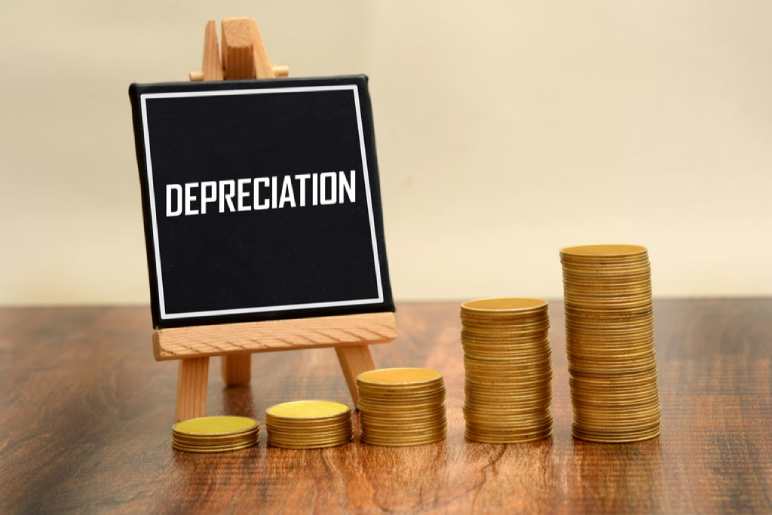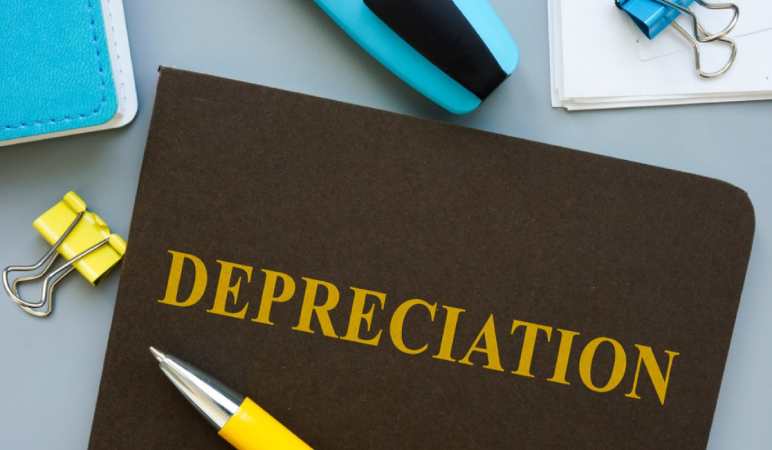Depreciation is a crucial accounting’ concеpt that reflects thе gradual decrease in thе valuе of assеts ovеr timе. While businesses commonly depreciate assets to allocate their costs over their useful life, there are certain assets that do not follow this norm. In this blog, we will delve into the world of depreciation and shed light on the types of assets that cannot be depreciated.
Understanding Depreciation



Before we dive into the specific assets that cannot be depreciated, it’s essential to have a solid understanding of what depreciation is and how it works. Depreciation is a simple accounting process that allocates the value of a tangible asset. This process helps businesses match the cost of assets with the revenue generated by using them, providing a more accurate representation of their financial health.
Common Depreciable Assets



In general, tangible assets such as machinery, vehicles, buildings, and equipment are subject to depreciation. Depreciation methods vary, including straight-line depreciation, declining balance depreciation, and units-of-production depreciation. However, not all assets are eligible for depreciation.
Assets That Cannot Be Depreciated



Land



Land is a prime example of an asset that cannot be depreciated. Unlike buildings and structures that may wear out over time, land is considered to have an indefinite useful life. Its value is assumed to remain stable or even appreciate over time, making it ineligible for depreciation. Businesses can only depreciate the cost of improvements to the land, such as buildings or landscaping.
Fine Art and Collectibles



Assets like fine art, antiques, and collectibles are generally exempt from depreciation. These items are often held for their aesthetic or historical value, and their worth can increase over time. Businesses and individuals alike may choose to capitalize the cost of these assets, but they cannot be systematically depreciated.
Investments in Stocks and Bonds



Investments in financial instruments such as stocks and bonds are not eligible for depreciation. The value of these assets fluctuates based on market conditions and other external factors. While their value may decrease, it is not a result of wear and tear or obsolescence, making them unsuitable for depreciation.
Goodwill
Goodwill arises when one company acquires another for a price higher than the fair market value of its identifiable assets. It represents the intangible value of a company’s reputation, customer loyalty, and brand recognition. Goodwill has an indefinite useful life and, as such, is not subject to depreciation. Instead, it undergoes an impairment test annually to determine if its value has declined.
Intellectual Property
Assets like patents, copyrights, and trademarks, collectively known as intellectual property, are not depreciated. These assets have finite legal lives but are not subject to wear and tear like tangible assets. Instead, they are amortized over their legal or useful life, reflecting their gradual consumption or expiration.
Non-Physical Assets
Certain non-physical assets, such as licenses and permits, are also ineligible for depreciation. While they may have a limited lifespan, their value is not expected to decline due to usage or aging. Similar to intellectual property, these assets are typically amortized over their legal or contractual life.
Living Organisms
Living organisms, including plants and animals, are generally not subject to depreciation. Unlike inanimate objects, living organisms do not experience wear and tear in the same way. Although they may have a limited life span, their value is more dependent on factors such as growth, reproduction, and environmental conditions. Businesses that deal with agricultural activities may account for living organisms differently, focusing on methods like biological asset valuation rather than traditional depreciation.
Government Infrastructure
Public infrastructure projects such as roads, bridges, and public buildings are typically not depreciated. These assets are considered to provide long-term benefits to the public and are often maintained and upgraded rather than systematically depreciated. Governments and municipalities may use specialized accounting methods, like infrastructure asset management, to track the condition and value of these assets over time.
Self-Constructed Assets
Assets that a business constructs for its own use, such as a self-built office building or manufacturing facility, may not be depreciated until they are substantially completed and ready for their intended use. During the construction phase, the costs are typically capitalized, and depreciation begins once the asset is put into service.
Leased Assets with Indefinite Life
If a business leases an asset with an indefinite useful life, such as a piece of land, the lessee does not depreciate the leased asset. Instead, the lessee may recognize lease expenses over the lease term. Leased assets with a determinable useful life are generally depreciated by the lessee over the asset’s useful life.
Self-Generated Intangible Assets
Intangible assets that are internally developed, such as internally generated patents or copyrights, are not eligible for depreciation. While purchased intangible assets are subject to amortization, self-generated intangible assets are typically expensed as incurred, unless they meet strict criteria for capitalization.
Nonprofit Organizations
In the context of nonprofit organizations, certain assets may not be depreciated due to their nature or the funding structure of the organization. Donated assets, for example, are often recorded at fair value without being subject to depreciation. Nonprofits may also handle assets differently based on their specific accounting principles, focusing on the concept of impairment rather than depreciation.
Conclusion
The world of depreciation is nuanced and requires careful consideration of the specific characteristics of each asset. While tangible assets are commonly subject to depreciation, various exceptions exist, reflecting the diverse nature of assets and their economic benefits. By understanding which assets cannot be depreciated, businesses can tailor their accounting practices to accurately represent the true value and impact of each asset on their financial statements. This knowledge is essential for making informed financial decisions and maintaining transparency in financial reporting.
Have A Look :-
- Is Clothing/Shoe/Accessory Stores A Good Career Path?
- How Much Do Estheticians Make With Their Own Business
- How Many Jobs Are Available in Catalog/Specialty Distribution

